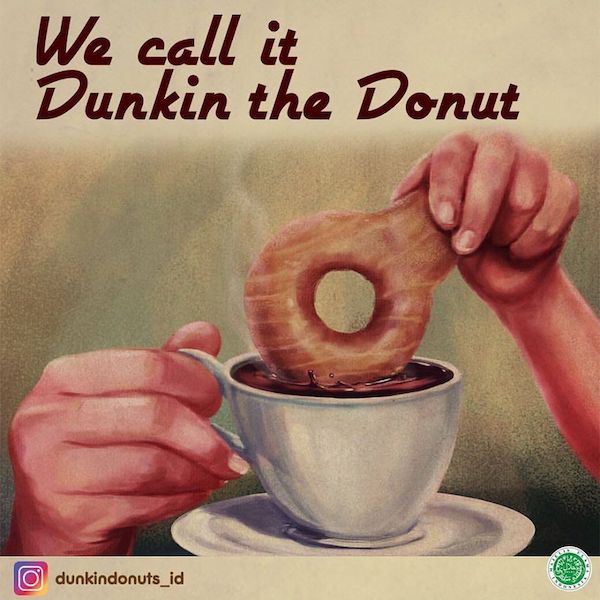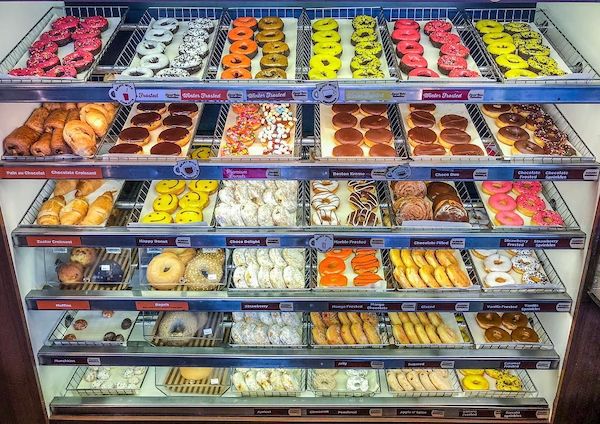Dunkin Donuts is an American institution that has spawned an untold number of copycats over the years. Since its creation in 1948, the company has grown from one shop in Massachusetts to over 11,000 locations across 37 countries. It was all the brainchild of an 8th-grade dropout named William Rosenberg who noticed that Americans really liked donuts with their coffee.
Rosenberg was born in 1916 in Massachusetts to immigrant parents that owned a grocery store. Amid the financial hardships of the Great Depression, the family lost their business and Rosenberg was forced to leave school by eighth grade to help support them. After several odd jobs, he finally landed at Western Union working as a full-time telegram delivery boy at age 14. At 17, he moved on to a company called Simco which distributed ice cream from refrigerated trucks where he also started as a delivery boy. By the time he was 21, he was national sales manager, supervising production, shipping, cold storage, and manufacturing, as well as managing anywhere from 40 to 100 trucks.
When World War II broke out, he left the ice cream business to work at the Quincy shipyards where he had an early breakthrough. He realized from his shipyard experience that employees of large industries had few options for refreshments. Recognizing a need and an opportunity, after the war he bought several army surplus vehicles and converted them into mobile canteens that brought coffee and lunch to the shipyard workers. Because of postwar scarcity, he couldn’t buy enough trucks, so he created his own catering vehicles with sides that rose to reveal sandwiches and snacks stocked on stainless steel shelves, an early prototype for today’s food trucks. Within a short time, he had 200 trucks, 25 in-plant outlets, and a vending operation.
When he realized that nearly half his sales were from coffee and donuts, he took a leap of faith in 1948 and opened a restaurant called “Open Kettle” that specialized in those two items. It was not the first donut shop in history but it was a definite standout thanks to the 52 varieties of donuts the shop offered, as opposed to the standard 5 varieties at other establishments. That allowed him to have a different special each day of the week and the novelty alone drew scores of curious customers to the store.
Many predicted the restaurant would fail due to the low prices – five cents for a donut and ten cents for a cup of coffee. But it was an immediate success, and soon Rosenberg was grossing over $5,000 a week just from coffee and donuts. The only thing he was not pleased with was the name so he tasked some of his employees with coming up with something better. But it was his architect that came up with the trademark “Dunkin Donuts,” which described what most people did at the restaurant – dunked their donuts in coffee.
After opening the 6th Dunkin Donuts location, Rosenberg realized he could not physically oversee further expansion so he turned to the franchise model. This was a couple of years before food giants like KFC and McDonald’s got into the franchise game. In fact, at the time, franchising was considered so disreputable that it was borderline illegal in some states, and no company mentioning “franchise” could be advertised in the Wall Street Journal or the New York Times.
But as Rosenberg explained once, “Franchising supports the great American dream of allowing multitudes to own and succeed in their own businesses.” He set out to make franchising respectable by not only setting high standards for Dunkin Donuts stores but also by founding the International Franchise Association in 1959 to uphold standards. By 1963, the 100th Dunkin Donuts restaurant in the chain opened, and by the 1970s, there were 1,000 shops across the nation and around the world.
Throughout his life, Rosenberg always quipped that he was “too dumb to make things complicated,” and credited his uncanny ability to make money to one simple philosophy – “The boss is the customer.” It was a lesson he said he learned early on from delivering groceries at his father’s store and fine-tuned over the years, growing more successful by inventing ever more ways to please customers.
In 1971, after he was diagnosed with lung cancer, Rosenberg decided to step back somewhat from Dunkin’ Donuts and devote time to his Wilrose Farm. He had no background in horses or farming but he did know enough to hire horse-breeding experts and to learn from them. By decade’s end, he was the largest standardbred breeder in New England and was inducted into the New England Hall of Fame of the Standardbred Industry. He donated the farm to the University of New Hampshire in the 1980s and dedicated the rest of his life to philanthropy, primarily benefiting hospitals. Rosenberg passed away in 2002 at the age of 86. (Sources: Inc., Wikipedia, “Time to Make the Donuts: The Founder of Dunkin Donuts Shares an American Journey”)










